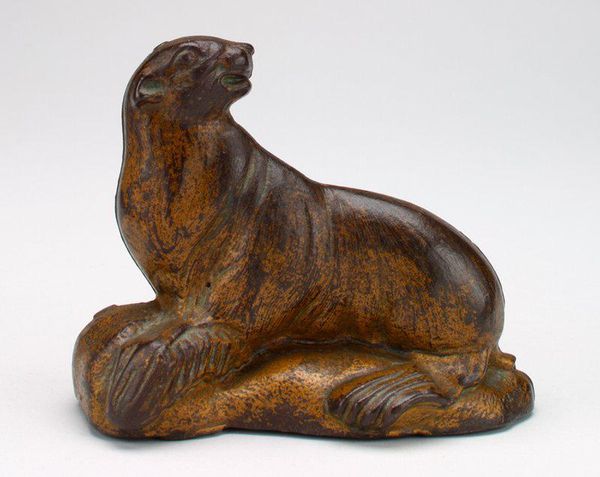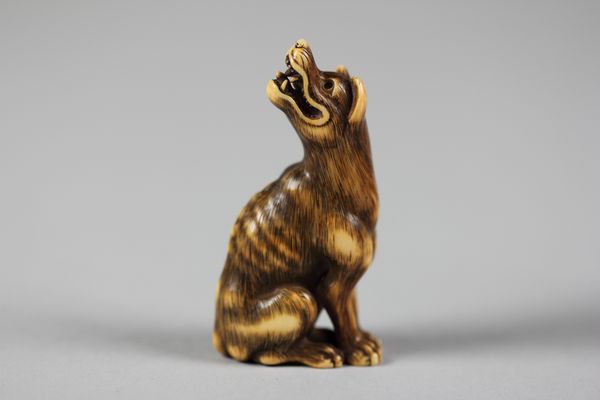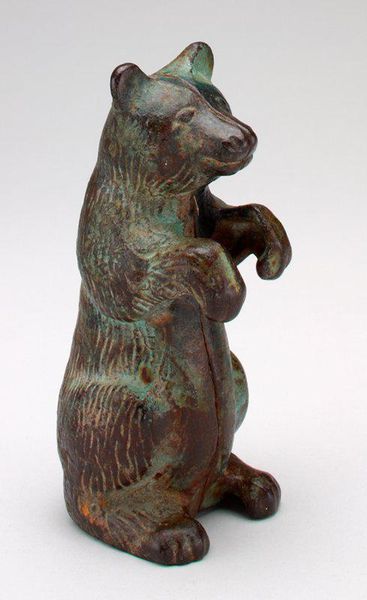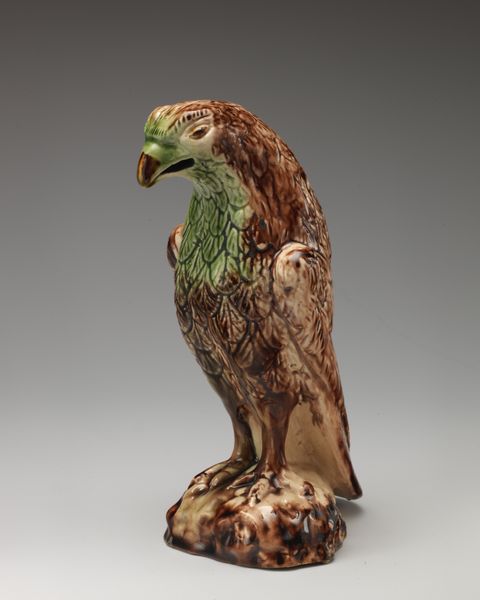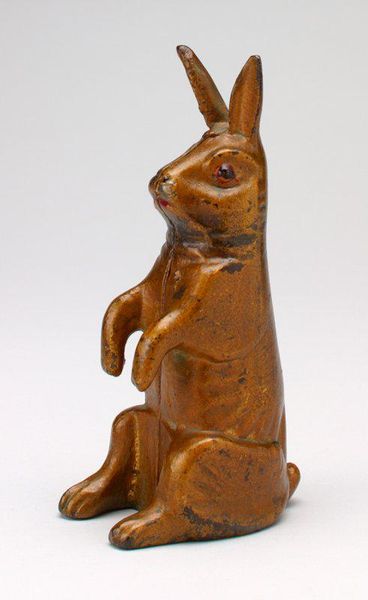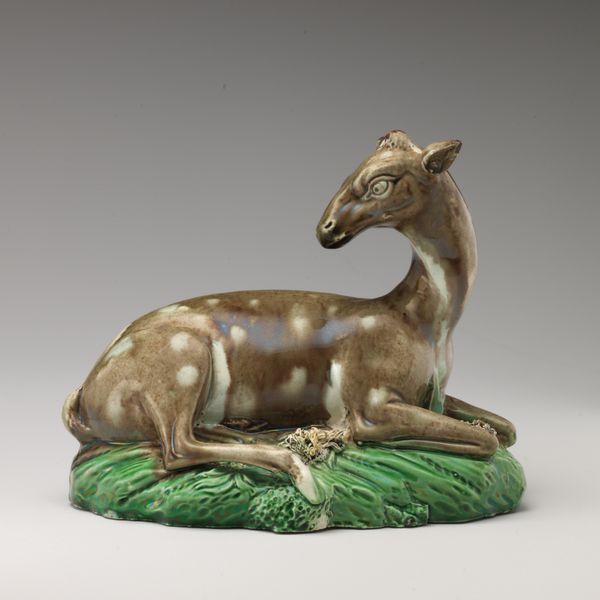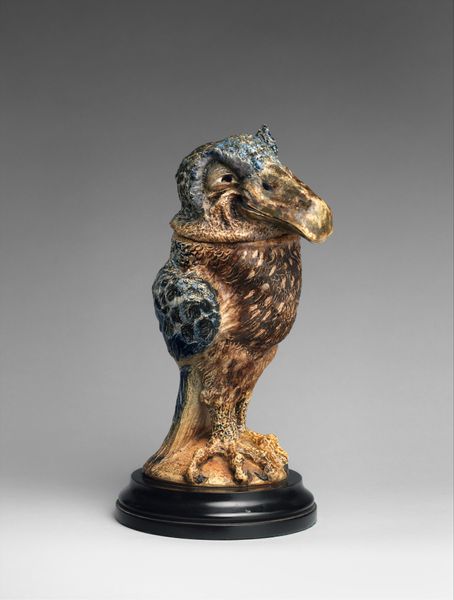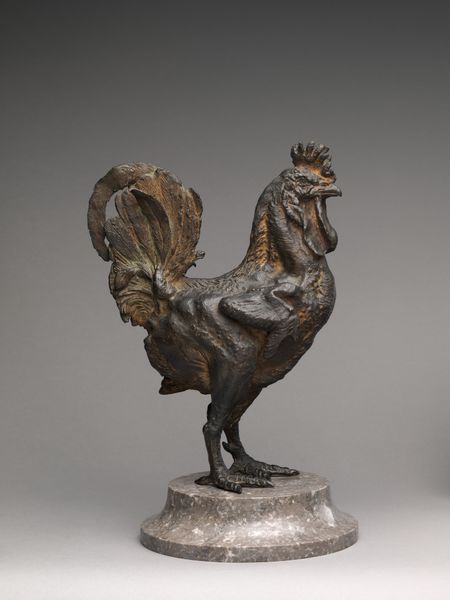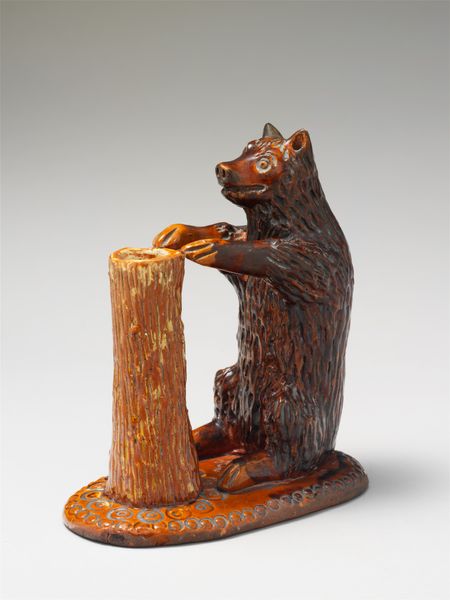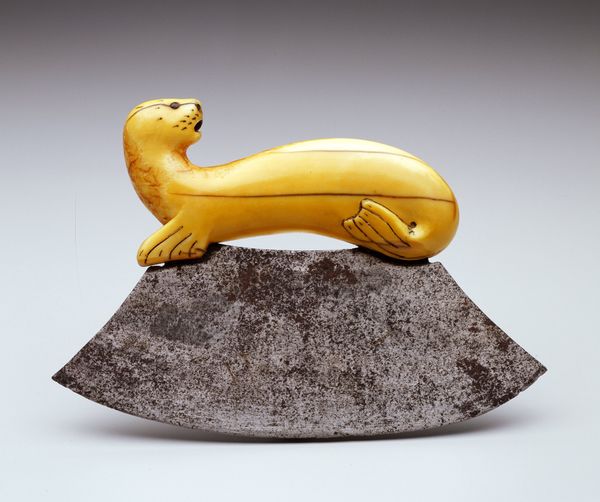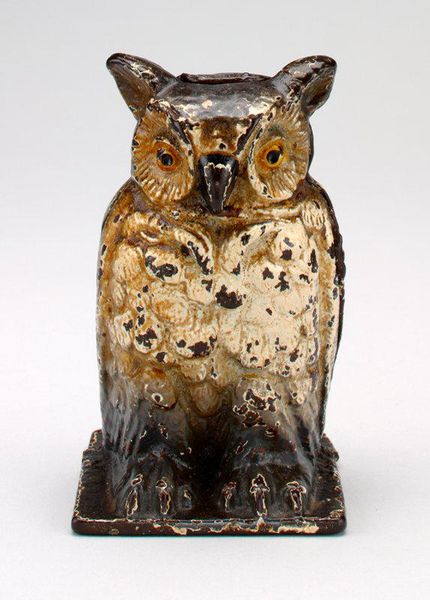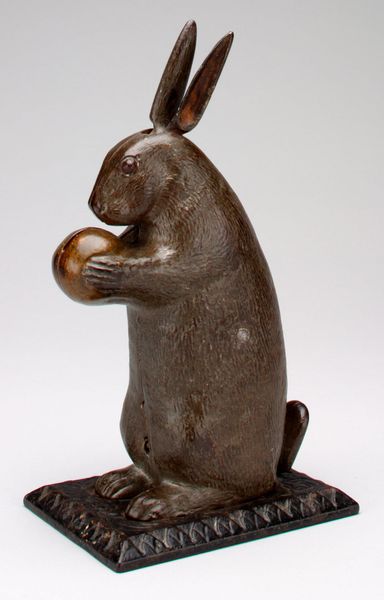
Brown squirrel with collar and chain 1765 - 1785
0:00
0:00
ceramic, sculpture
#
ceramic
#
figuration
#
coloured pencil
#
detailed observational sketch
#
sculpture
#
decorative-art
Dimensions: Height: 7 in. (17.8 cm)
Copyright: Public Domain
Curator: This is "Brown squirrel with collar and chain", a delightful ceramic sculpture created by Ralph Wood the Younger, likely between 1765 and 1785. It's part of the decorative arts collection at the Metropolitan Museum. Editor: Oh my, that is immediately striking! The sheer level of detail—it almost feels as if one could pluck it from the shelf. The textures rendered in ceramic… remarkable! Curator: Indeed! Notice how Wood employed strategic glazing to emphasize contours and volume. The almost lifelike coloration—the careful gradations from the brown of the fur to the near-white underbelly—imparts such dimensionality. Editor: But also this bizarre, ornamental chain! The squirrel as decoration. Is it a commentary on nature subdued for human purposes, reflecting perhaps the emerging societal trends toward decorative arts? Curator: It raises interesting questions about class and privilege, wouldn’t you agree? The decorative collar suggests domestication and commodity; not simply an animal, but one possessed, its value inextricably linked to ownership. Editor: Precisely. Consider also the labor invested. Crafting such intricate ceramic work speaks volumes about artisanal skill, demanding both meticulous attention and deep familiarity with the properties of clay and glaze. Were pieces such as these, though they simulate wildlife, accessible only to a privileged class, perpetuating inequality? Curator: An excellent point. Though the sculpture captures naturalistic details, like the delicate paws holding food, it's filtered through a specific social lens, one prioritizing refinement over pure observation. Editor: So much is embedded within this small object. It’s an illustration of class, a commentary on animal subjugation, a sample of exceptional artistic skills from laborers during the late 18th century. Even the decorative touches like the rocaille base place it firmly within its material context. Curator: Absolutely. By focusing on formal and philosophical structures, the artistry reveals tensions present in that particular cultural and temporal moment, when nature itself becomes molded, controlled, refined… Editor: And made to participate in the intricate hierarchies of wealth and status. Curator: A captivating sculpture to be sure, with profound resonance to consider further.
Comments
No comments
Be the first to comment and join the conversation on the ultimate creative platform.

